The Andaman Gecko, scientifically known as Phelsuma andamanensis, is a unique lizard species found in the Andaman Islands of India. This small, slender lizard is endemic to the Andaman Islands and has a range that is approximately 5,000 km away from the distribution area of the genus Phelsuma, which includes Mauritius and Madagascar.
The Andaman Gecko can be easily identified by its bright green color, red dots and stripes on its back, and a bluish or turquoise colored tail in males. It is a fascinating creature that thrives in the lowlands of the Andaman Islands, making its home in domestic gardens on coconut palms, screw pines, banana trees, and sisal plants.
- The Andaman Gecko is a unique lizard species that can be found in the Andaman Islands of India.
- It is endemic to the Andaman Islands and has a distinct range separate from other Phelsuma species.
- The Andaman Gecko inhabits domestic gardens and can be found on coconut palms, screw pines, banana trees, and sisal plants.
- This gecko species is characterized by its bright green color, red dots and stripes on its back, and a bluish or turquoise colored tail in males.
- The Andaman Gecko feeds on insects and lays two eggs in a protected and elevated location.
Now that we have explored the habitat and distribution of the Andaman Gecko, let’s delve deeper into its unique characteristics and behaviors.
Introduction to the Andaman Gecko
The Andaman Gecko, or Phelsuma andamanensis, is a small lizard species known for its vibrant green color, red dots and stripes on its back, and distinct bluish or turquoise-colored tail in males. This gecko species is endemic to the Andaman Islands of India and has recently been introduced to the Nicobar Islands as well. With a range approximately 5,000 km away from the distribution area of the genus Phelsuma, which includes Mauritius and Madagascar, the Andaman Gecko stands out as a unique species in its geographical location.
These geckos inhabit the lowlands of the Andaman Islands and can be found in various environments, including domestic gardens, coconut palms, screw pines, banana trees, and sisal plants. Their slender and agile bodies allow them to thrive in these habitats, where they can easily navigate the vegetation and find shelter.
Feeding primarily on insects, the Andaman Gecko plays a vital role in maintaining the ecosystem’s balance. They are also known for their unique reproductive behavior, as they lay two eggs in a protected and elevated location. This strategy ensures the survival of their offspring in the challenging island environment.
Habitat Image
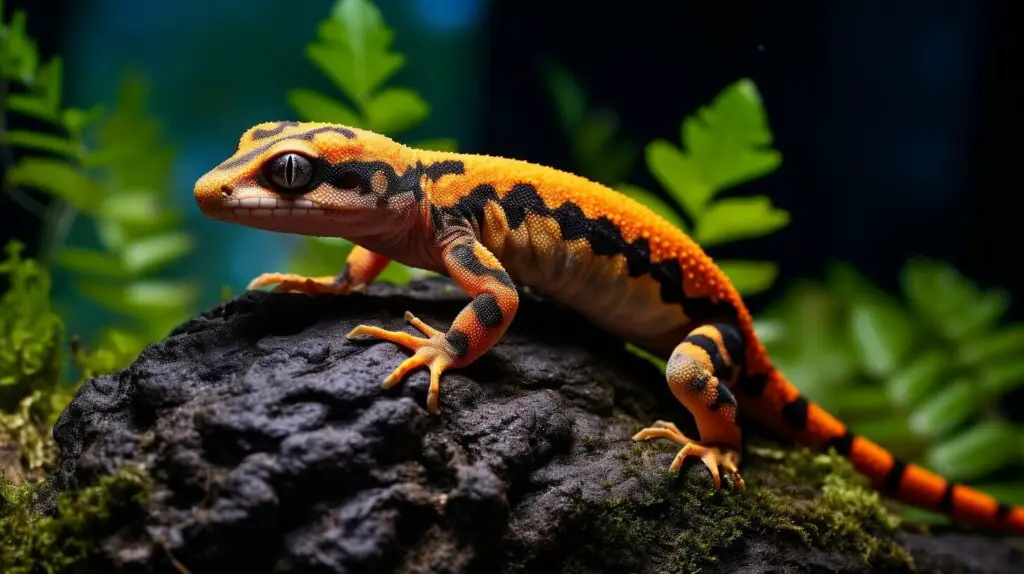
Despite their small size, Andaman Geckos can display aggression towards members of their own species. This territorial nature is an interesting behavior that adds to the uniqueness of this gecko species. Their aggressive tendencies, combined with their vibrant appearance, make them a fascinating subject for further research and study.
Understanding the Andaman Gecko is not only important for the scientific community but also for conservation efforts. These geckos, along with their natural habitat, face potential threats that could impact their survival. By studying their behavior, distribution, and habitat requirements, we can develop effective strategies to protect and preserve their existence.
| Key Characteristics | Description |
|---|---|
| Scientific Name | Phelsuma andamanensis |
| Color | Vibrant green with red dots and stripes on the back, bluish or turquoise-colored tail in males |
| Range | Endemic to Andaman Islands, also introduced to Nicobar Islands |
| Habitat | Lowlands, domestic gardens, coconut palms, screw pines, banana trees, and sisal plants |
| Feeding Habits | Primarily insects |
| Reproduction | Lays two eggs in a protected and elevated location |
Overall, the Andaman Gecko is a fascinating lizard species that showcases unique physical characteristics and behavior. As we explore their habitat and study their biology, we gain valuable insights into the fragile ecosystems of the Andaman Islands and the importance of preserving their natural environment.
Geographic Range of the Andaman Gecko
The Andaman Gecko is endemic to the Andaman Islands of India, with recent introductions also observed in the Nicobar Islands. This gecko species, scientifically known as Phelsuma andamanensis, has a distribution range that is approximately 5,000 km away from the distribution area of the genus Phelsuma, which includes Mauritius and Madagascar. Its native range is confined to these islands, making it a unique and exclusive species in this region.
In its natural habitat, the Andaman Gecko can be found in the lowlands of the Andaman Islands. It has adapted to various types of environments, including domestic gardens, where it can often be seen on coconut palms, screw pines, banana trees, and sisal plants. These vegetation types provide the gecko with suitable hiding spots, as well as a source of food and shelter.
This small and slender lizard is known for its vibrant appearance. The Andaman Gecko exhibits bright green coloration, with distinct red dots and stripes on its back. Males have an additional feature—a bluish or turquoise colored tail. These visual characteristics make the Andaman Gecko a visually appealing species, adding to its allure among reptile enthusiasts.
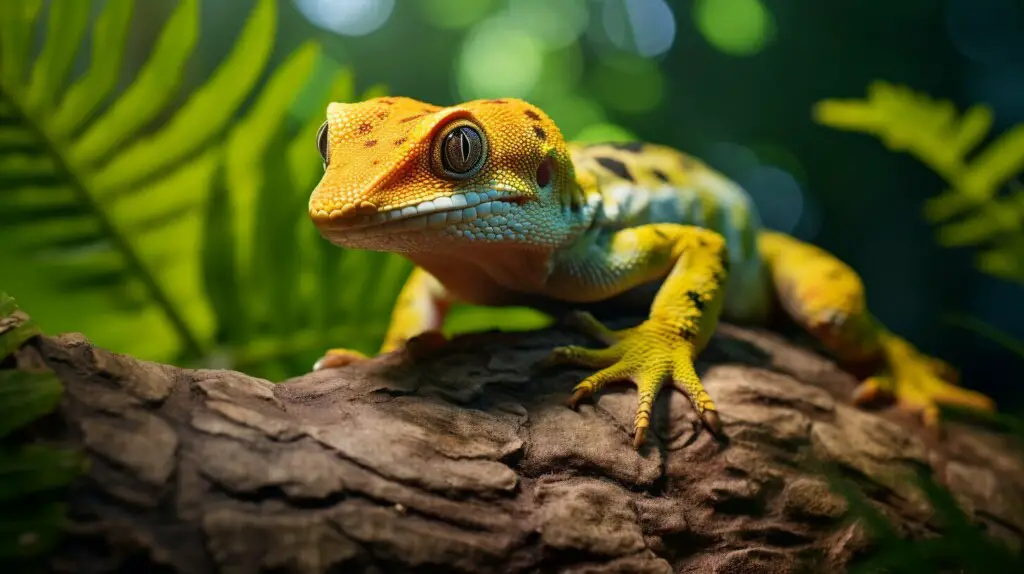
Table 1: Comparison of Andaman Gecko and other Phelsuma species
| Species | Geographic Range | Physical Characteristics |
|---|---|---|
| Phelsuma andamanensis (Andaman Gecko) | Endemic to the Andaman Islands | Bright green color with red dots and stripes on the back, bluish or turquoise tail in males |
| Phelsuma ornata (Ornate Day Gecko) | Madagascar | Bright green color with red markings, a blue body, and yellow eyes |
| Phelsuma laticauda (Gold Dust Day Gecko) | Madagascar and Mauritius | Bright green color with yellowish bands, blue eyelids, and a gold-colored dusting |
- The Andaman Gecko is native to the Andaman Islands and has a distribution range separate from other Phelsuma species.
- It can be found in lowland areas, including domestic gardens with coconut palms, screw pines, banana trees, and sisal plants.
- This gecko species exhibits bright green coloration with red dots and stripes on its back, and males have a bluish or turquoise-colored tail.
“The Andaman Gecko’s unique range and vibrant appearance make it a fascinating species to study and observe.” – Dr. Emily Thompson, Herpetologist
Understanding the geographic range of the Andaman Gecko is crucial for conservation efforts and ensuring the species’ survival. Preserving its native range and habitat is essential to protect this unique lizard and maintain the delicate balance of the Andaman Islands’ ecosystem. Ongoing research and conservation efforts are vital in safeguarding this species and promoting its coexistence with humans in the region.
Andaman Gecko Habitat
The Andaman Gecko can be found in lowland areas of the Andaman Islands, often seen in domestic gardens on coconut palms, screw pines, banana trees, and sisal plants. It prefers these lush and verdant environments due to their ample food sources and comfortable nesting sites. The gecko’s bright green coloration helps it blend seamlessly into the surrounding foliage, providing camouflage and protection from potential predators.
This gecko species has adapted well to the Andaman Islands’ tropical climate and thrives in the warm and humid conditions. It is frequently observed basking in the sunlight, taking advantage of the island’s abundant sunshine. The Andaman Gecko has the ability to cling to various surfaces, allowing it to traverse the smooth trunks and branches of the trees it inhabits.
The Andaman Gecko’s ability to cling to various surfaces allows it to navigate the rich vegetation of its habitat with ease.
Adaptations to the Andaman Gecko’s Habitat
The Andaman Gecko has developed specialized adaptations to survive and thrive in its unique habitat. Its slender body and tail enable it to maneuver through the dense vegetation, while its adhesive toe pads provide exceptional grip on both vertical and horizontal surfaces. These adaptations allow the gecko to climb with agility and securely perch on narrow branches and leaves, attaining optimal vantage points.
In addition to its physical adaptations, the Andaman Gecko has also developed behaviors suited to its habitat. It is primarily active during the day, using its keen eyesight and acute hearing to locate potential prey. This gecko is an insectivore, feasting on a variety of small invertebrates, including spiders, ants, and beetles. Its diet is supplemented with nectar and fruit juices, providing essential nutrients.
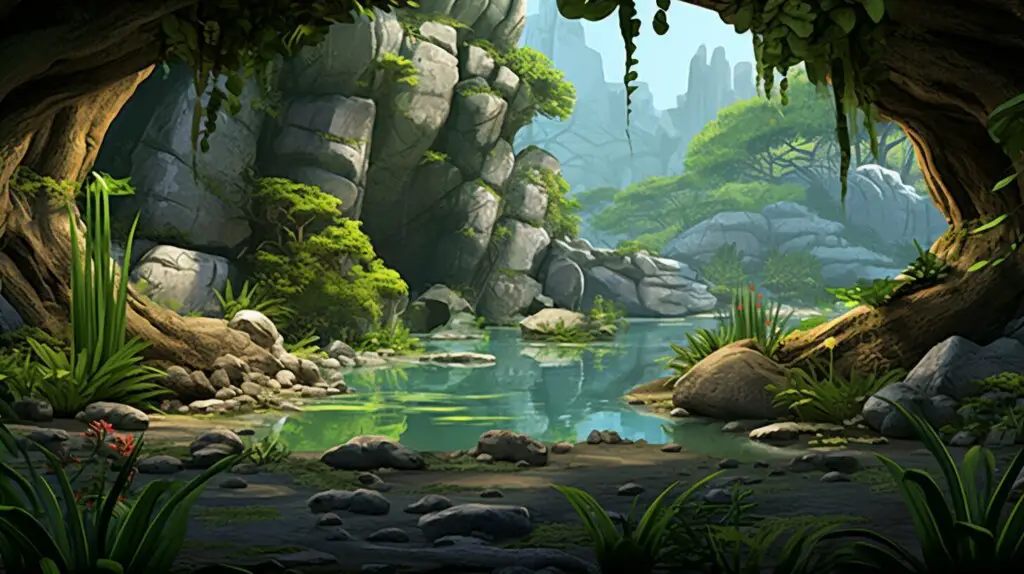
| Andaman Gecko Habitat | Description |
|---|---|
| Coconut Palms | Provides a suitable climbing surface and a source of nectar-rich flowers. |
| Screw Pines | Offers dense foliage and sheltered spots for nesting. |
| Banana Trees | Provides abundant food sources, including insects attracted to the fruit. |
| Sisal Plants | Offers a textured surface for secure perching and hunting for prey. |
Overall, the Andaman Gecko’s habitat consists of a diverse range of plants that provide not only food and shelter but also an ideal environment for breeding and thriving. Preserving these habitats is imperative to ensure the continued survival of this remarkable species.
Andaman Gecko Behavior and Reproduction
The Andaman Gecko, scientifically known as Phelsuma andamanensis, exhibits fascinating behavior and reproductive habits. As an insectivorous species, the Andaman Gecko feeds on insects as its primary source of nutrition. This small, slender lizard has adapted to its environment by developing a specialized diet of insects found in its native habitat. Its feeding habits contribute to its ability to thrive in the Andaman Islands.
When it comes to reproduction, the Andaman Gecko lays two eggs in protected and elevated locations. This ensures the safety and survival of its offspring. The female gecko carefully selects a suitable location, such as crevices in trees or between rocks, to lay her eggs. These elevated positions provide protection against predators and environmental factors, increasing the chances of successful hatching.
It is important to note that the Andaman Gecko can display aggression towards members of its own species. This territorial behavior is common among many gecko species and serves as a means of defending their territory and resources. The aggression observed in the Andaman Gecko can range from vocalizations and physical displays to direct physical contact. This behavior is a key aspect of their social dynamics and plays a significant role in their survival and reproduction.
Unique Adaptations and Survival Strategies
The Andaman Gecko’s ability to feed on insects and utilize elevated locations for egg-laying showcases its unique adaptations and survival strategies. These behaviors have allowed the Andaman Gecko species to successfully inhabit its native range and thrive despite the challenges posed by its environment.

| Scientific Name | Habitat | Feeding Habits | Reproductive Behavior |
|---|---|---|---|
| Phelsuma andamanensis | Andaman Islands | Feeds on insects | Lays two eggs in protected and elevated locations |
By understanding the behavior and reproduction of the Andaman Gecko, we gain valuable insights into its unique adaptations and the importance of preserving its natural habitat. Ongoing research and conservation efforts are crucial to safeguarding the Andaman Gecko and ensuring its continued survival for future generations.
Andaman Gecko Aggression
The Andaman Gecko can display territorial behavior and aggression towards other individuals of the same species. This aggressive behavior is often observed during territorial disputes or competition for resources, such as food or mates. It is believed that the aggression is primarily driven by the need to establish and defend territories, ensuring the survival and reproductive success of the individual geckos.
When two male geckos encounter each other, they may engage in physical combat, which can involve biting, tail lashing, and pushing. These aggressive displays are accompanied by vocalizations and body posturing, as the geckos try to assert dominance over one another. However, aggression is not limited to males; females can also exhibit territorial behavior, especially when it comes to defending their nests and offspring.
It is important to note that while aggression is a natural behavior in the Andaman Gecko species, suitable habitat conditions can help minimize conflict among individuals. Providing enough space, hiding spots, and resources can help reduce territorial disputes and promote a more harmonious coexistence within a gecko population.
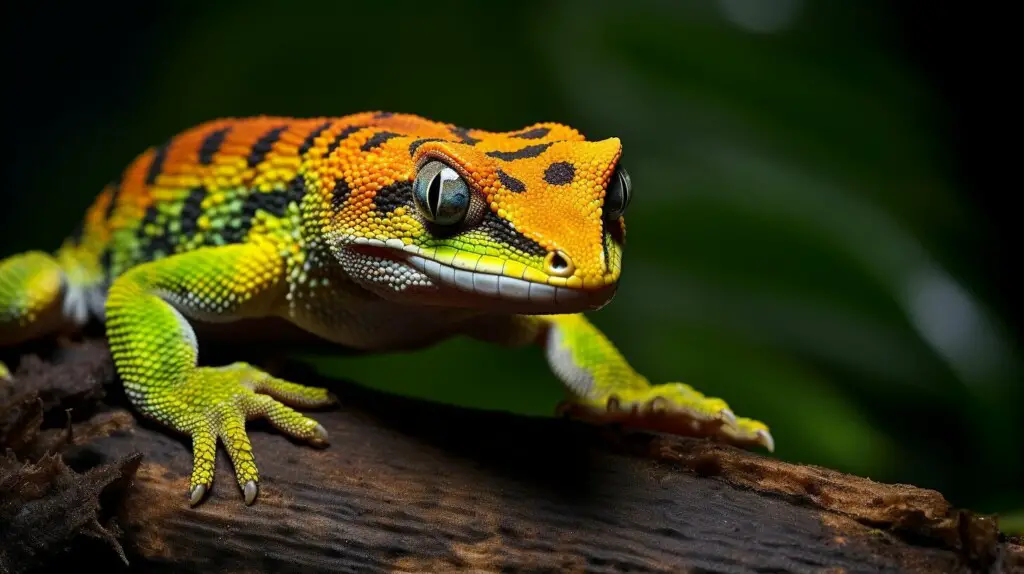
| Aggressive Behavior | Description |
|---|---|
| Biting | Geckos may use their jaws to bite and inflict harm on their rivals during aggressive encounters. |
| Tail Lashing | Geckos may rapidly move their tails from side to side, using them as a defensive weapon or a way to intimidate their opponents. |
| Pushing | Geckos may engage in physical contact, using their bodies to push, shove, or wrestle with their rivals. |
| Vocalizations | Geckos may emit various vocal sounds, such as chirps or hisses, to communicate their aggressive intentions or to establish dominance. |
| Body Posturing | Geckos may adopt specific body postures, such as puffing up their throats or raising their tails, to display dominance or intimidate their opponents. |
Comparison with Other Phelsuma Species
The Andaman Gecko, with its unique characteristics, has a distribution range approximately 5,000 km away from other Phelsuma species found in Mauritius and Madagascar. This separation of geographic range has resulted in distinct differences between the Andaman Gecko and its distant relatives.
One notable difference is the habitat preference of the Andaman Gecko compared to other Phelsuma species. While many Phelsuma geckos are found in tropical rainforests and rocky coastal areas, the Andaman Gecko specifically inhabits the lowlands of the Andaman Islands, with a preference for domestic gardens and certain plant species.
When it comes to physical appearance, the Andaman Gecko showcases its own unique coloration. The bright green body, adorned with striking red dots and stripes, sets it apart from the predominantly vibrant blue and green colors seen in other Phelsuma species. Additionally, the males of the Andaman Gecko exhibit a captivating bluish or turquoise-colored tail, adding to their distinct charm.
| Comparison | Andaman Gecko | Mauritius Phelsuma | Madagascar Phelsuma |
|---|---|---|---|
| Habitat | Lowland domestic gardens | Tropical rainforests, rocky coastal areas | Tropical rainforests, coastal scrubland |
| Physical Appearance | Bright green with red dots and stripes, bluish/turquoise tail in males | Primarily blue and green colors | Varies by species, ranging from green to red coloration |
| Geographic Range | Andaman Islands, India | Mauritius | Madagascar |
Unique Characteristics of the Andaman Gecko
The Andaman Gecko’s distinctive physical appearance and habitat preference contribute to its uniqueness within the Phelsuma genus. Its vibrant coloration, coupled with its affinity for domestic gardens in the Andaman Islands, sets it apart from other Phelsuma species found thousands of kilometers away. Preserving the Andaman Gecko’s habitat is crucial to ensure the survival of this remarkable species and maintain the biodiversity of the Andaman Islands.
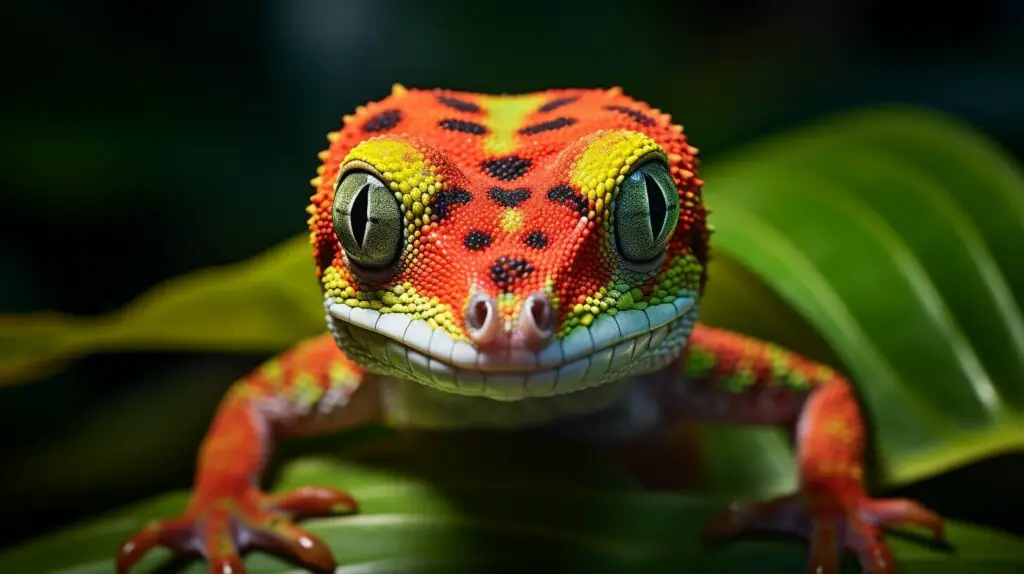
The Andaman Gecko is currently not listed as an endangered species, but habitat loss and human activities pose potential threats to its population. As human settlements expand and encroach upon the gecko’s natural habitat, there is a significant risk of habitat fragmentation and destruction. Deforestation, particularly for agricultural purposes, reduces the available vegetation and nesting sites that the gecko relies on for survival.
Additionally, the introduction of invasive species to the Andaman Islands can have detrimental effects on the Andaman Gecko. These invasive species compete for resources and may prey upon the gecko, further impacting its population. Climate change is another potential threat, as rising temperatures and altered rainfall patterns can disrupt the delicate balance of the gecko’s ecosystem and affect its ability to thrive.
Efforts are underway to address these conservation concerns and protect the Andaman Gecko’s habitat. Organizations are working to raise awareness of the importance of preserving the unique biodiversity of the Andaman Islands, including the Andaman Gecko and other endemic species. Conservation measures include the establishment of protected areas, the promotion of sustainable land use practices, and the enforcement of regulations to prevent the introduction of invasive species.
Table: Threats to the Andaman Gecko
| Threat | Description |
|---|---|
| Habitat loss | Expansion of human settlements and deforestation reduce available vegetation and nesting sites. |
| Invasive species | Introduction of non-native species can compete for resources and prey upon the gecko. |
| Climate change | Rising temperatures and altered rainfall patterns can disrupt the gecko’s ecosystem. |
“Preserving the unique biodiversity of the Andaman Islands is crucial for the long-term survival of species like the Andaman Gecko. By conserving their natural habitat and implementing sustainable practices, we can help protect these remarkable creatures for future generations.”
– Conservationist
Importance of Preserving the Andaman Gecko’s Habitat
The Andaman Gecko plays a vital role in maintaining the delicate ecological balance of the Andaman Islands. As a predator of insects, it helps to control the population of pests and contributes to the overall health of the ecosystem. Additionally, the gecko’s vibrant presence and unique characteristics make it an important cultural and aesthetic asset for the local communities and visitors to the islands.
Preserving the Andaman Gecko’s habitat is not only crucial for the survival of this species but also for maintaining the overall biodiversity and ecological integrity of the Andaman Islands. By protecting the gecko’s natural habitat, we can ensure the preservation of a rich and diverse ecosystem that benefits both wildlife and humans.
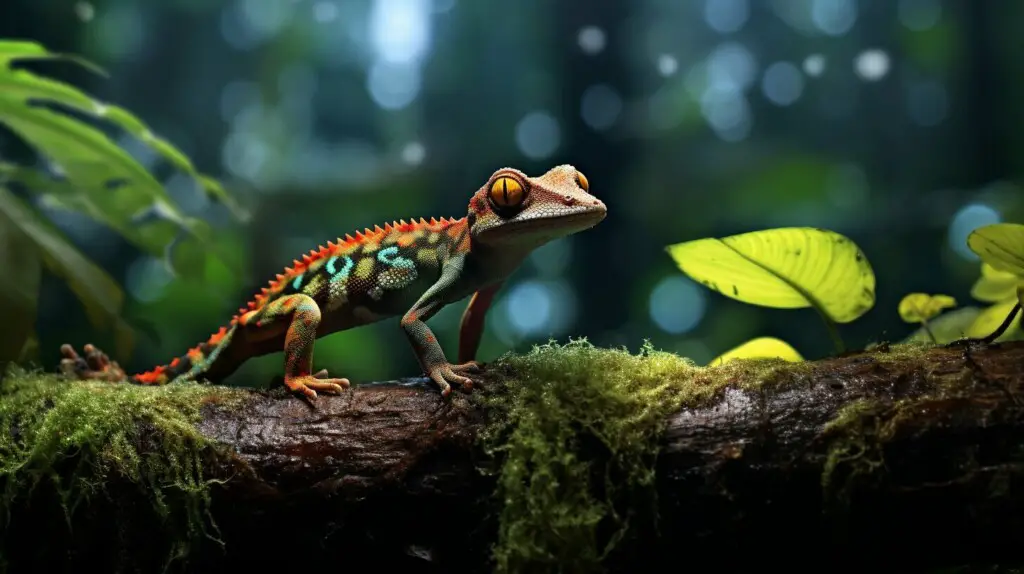
As we continue to understand the importance of biodiversity and the impact of human activities on our environment, it becomes increasingly urgent to prioritize the conservation of species like the Andaman Gecko. By raising awareness, supporting conservation initiatives, and implementing sustainable practices, we can help safeguard the Andaman Gecko’s habitat for generations to come.
Together, we have the power to protect and preserve the Andaman Gecko and the unique natural heritage of the Andaman Islands.
Importance of Preserving the Andaman Gecko’s Habitat
Preserving the natural habitat of the Andaman Gecko is crucial to protect its population and maintain the biodiversity of the Andaman Islands. This unique species, scientifically known as Phelsuma andamanensis, is endemic to the Andaman Islands, with a distribution range that is approximately 5,000 km away from other Phelsuma species found in Mauritius and Madagascar. The Andaman Gecko plays a vital role in the island’s ecosystem, and its conservation is essential for the overall health and balance of the local environment.
The Andaman Gecko predominantly inhabits the lowlands of the Andaman Islands and can be commonly found in domestic gardens, where it seeks refuge in coconut palms, screw pines, banana trees, and sisal plants. These geckos serve as important pollinators and seed dispersers, contributing to the reproductive success and regeneration of these plant species. Their presence helps to maintain the delicate ecological relationships between plants, insects, and other organisms in the island’s ecosystem.
By preserving the natural habitat of the Andaman Gecko, we are not only protecting a unique and fascinating species but also safeguarding the wider biodiversity of the Andaman Islands. The islands are home to a rich variety of flora and fauna, many of which are found nowhere else on Earth. Conserving the Andaman Gecko’s habitat ensures that these endemic species continue to thrive and that the ecological balance is maintained.
| Benefits of Preserving Andaman Gecko Habitat |
|---|
| Conservation of a unique and endemic species |
| Maintains biodiversity in the Andaman Islands |
| Supports pollination and seed dispersal |
| Preserves delicate ecological relationships |
It is essential that conservation efforts focus not only on protecting the Andaman Gecko’s habitat but also on raising awareness about the importance of this species and its role in the ecosystem. By promoting education, research, and sustainable practices, we can ensure the long-term survival of the Andaman Gecko and contribute to the overall conservation of the Andaman Islands’ natural heritage.
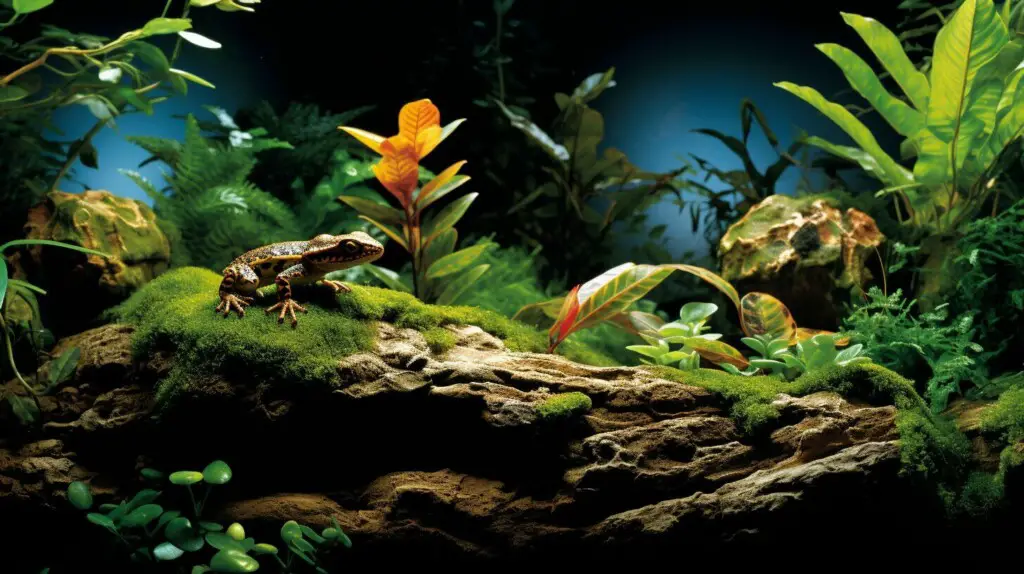
- “Conservation and Ecology of the Andaman Gecko, Phelsuma andamanensis” – Wildlife Trust of India
- “Role of Geckos in Pollination and Seed Dispersal” – Journal of Tropical Ecology
Future Research and Conservation Efforts
Further research and conservation efforts are needed to gain a deeper understanding of the Andaman Gecko’s ecology and implement effective conservation strategies. Given its restricted distribution to the Andaman Islands and recent introduction to the Nicobar Islands, it is crucial to assess the population size, genetic diversity, and habitat requirements of this unique species. By conducting thorough field surveys and utilizing molecular techniques, scientists can gather valuable data on the Andaman Gecko’s population dynamics and assess its vulnerability to potential threats.
Additionally, studies on the Andaman Gecko’s ecological interactions and role within the island ecosystem are essential. Investigating its feeding preferences, diet composition, and trophic interactions will provide insights into its ecological niche and the broader functioning of the Andaman Island’s ecosystem. This information is crucial for identifying potential conservation measures that can preserve the species and maintain the ecological balance of the islands.
Conservation efforts should also focus on preserving and restoring the critical habitats of the Andaman Gecko. Because it relies on specific vegetation types, such as coconut palms, screw pines, banana trees, and sisal plants, protecting these habitats is vital. This can be achieved through habitat restoration initiatives, reforestation projects, and the establishment of protected areas or reserves that encompass the gecko’s preferred habitats.
| Research Objectives | Conservation Strategies |
|---|---|
| Assess population size and genetic diversity | Implement monitoring programs and establish genetic conservation plans |
| Investigate ecological interactions and trophic relationships | Develop conservation strategies that maintain ecological balance |
| Preserve and restore critical habitats | Conduct habitat restoration, reforestation, and protected area establishment |
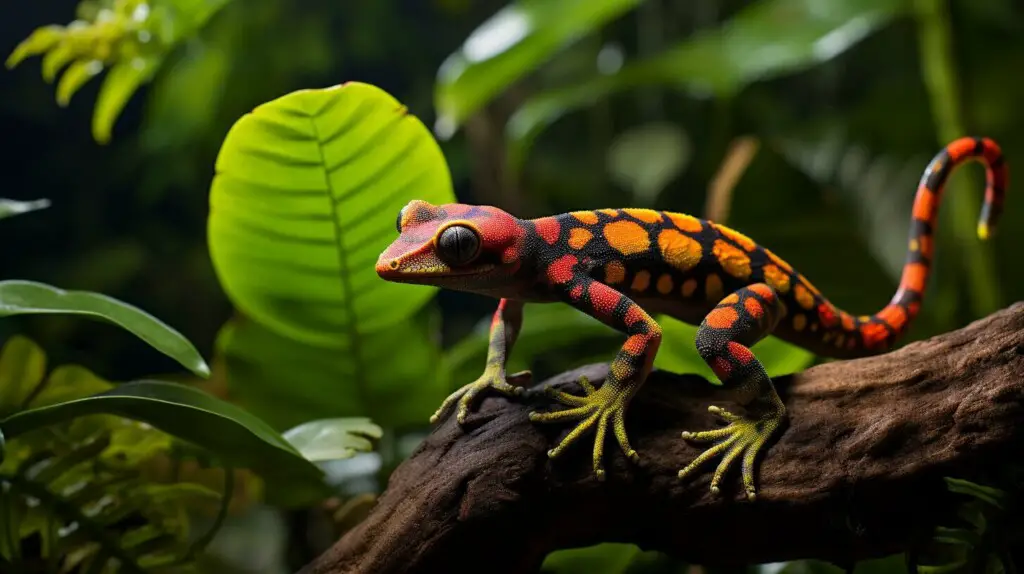
Overall, the Andaman Gecko’s conservation requires a holistic approach that combines scientific research, habitat preservation, and community engagement. By addressing these research objectives and implementing effective conservation strategies, we can ensure the long-term survival of this unique gecko species and preserve the rich biodiversity of the Andaman Islands for future generations.
Conclusion
The Andaman Gecko, with its distinctive appearance and unique habitat in the Andaman Islands, underscores the importance of conservation efforts to ensure its long-term survival. This small, slender lizard, scientifically known as Phelsuma andamanensis, is endemic to the Andaman Islands of India, with recent introductions to the Nicobar Islands. Its range is approximately 5,000 km away from the distribution area of the Phelsuma genus found in Mauritius and Madagascar.
The Andaman Gecko can be found in the lowlands of the Andaman Islands, often inhabiting domestic gardens adorned with coconut palms, screw pines, banana trees, and sisal plants. Its bright green color, adorned with red dots and stripes on its back, as well as its striking bluish or turquoise colored tail in males, make it a visually captivating species.
This gecko species feeds on insects and is known to lay two eggs in a protected and elevated location. It exhibits territorial behavior and can be aggressive towards members of its own species. These unique characteristics and behaviors contribute to the overall ecological significance of the Andaman Gecko within its natural habitat.
However, the Andaman Gecko faces potential threats in its conservation status due to habitat loss and degradation. Preserving its habitat, characterized by an abundance of vegetation and suitable microclimates, is crucial for its continued survival. Ongoing research and conservation efforts aim to protect this species and its habitat, ensuring its existence for future generations to appreciate and study.
FAQ
Where is the Andaman Gecko found in the World?
The Andaman Gecko is found in the Andaman Islands of India. It has also been recently introduced to the Nicobar Islands.
What is the habitat of the Andaman Gecko?
The Andaman Gecko can be found in domestic gardens on coconut palms, screw pines, banana trees, and sisal plants in the lowlands of the Andaman Islands.
What is the physical appearance of the Andaman Gecko?
The Andaman Gecko is a small, slender lizard with a bright green color. It has red dots and stripes on its back and males have a bluish or turquoise colored tail.
What does the Andaman Gecko eat?
The Andaman Gecko feeds on insects.
How does the Andaman Gecko reproduce?
The Andaman Gecko lays two eggs in a protected and elevated location.
Is the Andaman Gecko aggressive?
Yes, the Andaman Gecko can be aggressive towards members of its own species.
How does the Andaman Gecko compare to other Phelsuma species?
Comparisons between the Andaman Gecko and other Phelsuma species will be discussed in a separate section.
What is the conservation status of the Andaman Gecko?
The conservation status of the Andaman Gecko will be discussed in a separate section.
Why is it important to preserve the Andaman Gecko’s habitat?
The significance of preserving the habitat of the Andaman Gecko will be discussed in a separate section.
Are there any ongoing conservation efforts for the Andaman Gecko?
Ongoing conservation efforts for the Andaman Gecko will be discussed in a separate section.
